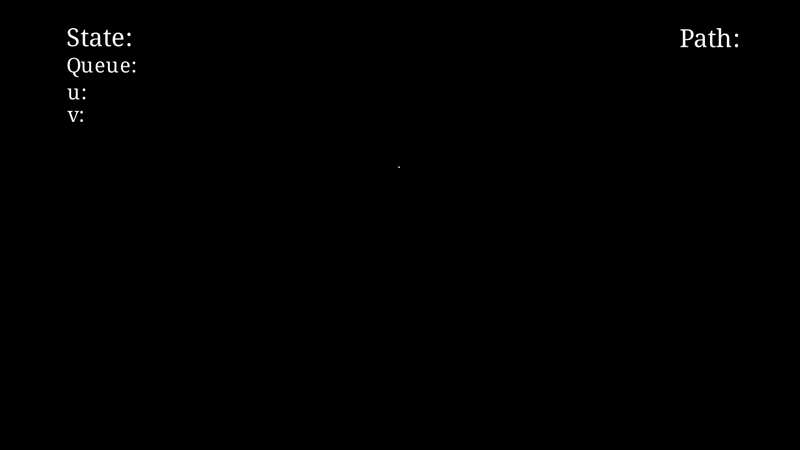Breadth First Search (BFS)
Finished ![]()
What is BFS 
Breadth‑First Search (BFS) is a graph‑traversal algorithm that explores a graph level by level. Starting from a source vertex, it first visits all immediate neighbours (distance 1), then all vertices at distance 2, and so on until every reachable vertex has been discovered.
Algorithm (pseudocode) 
So the key idea is First in first out (FIFO)
BFS(G, s):
create an empty queue Q
mark s as visited and enqueue s ➜ Q ← [s]
while Q is not empty:
u ← dequeue(Q)
for each neighbour v of u in G:
if v is unvisited:
mark v as visited
enqueue v ➜ Q ← Q ∪ {v}
Time complexity: \(\mathcal{O}(|\mathcal{V}|+|\mathcal{E}|)\) Space complexity: \(\mathcal{O}(|\mathcal{V}|)\) (It uses a queue to keep track of the vertices that need to be visited.) Usage - shortest path in unweighted graphs, connectivity checks, level ordering, bipartite testing, etc.
Visualization :look:
The animation below is generated with Manim. It shows BFS expanding a queue and colouring vertices/edges in the order they are discovered.
